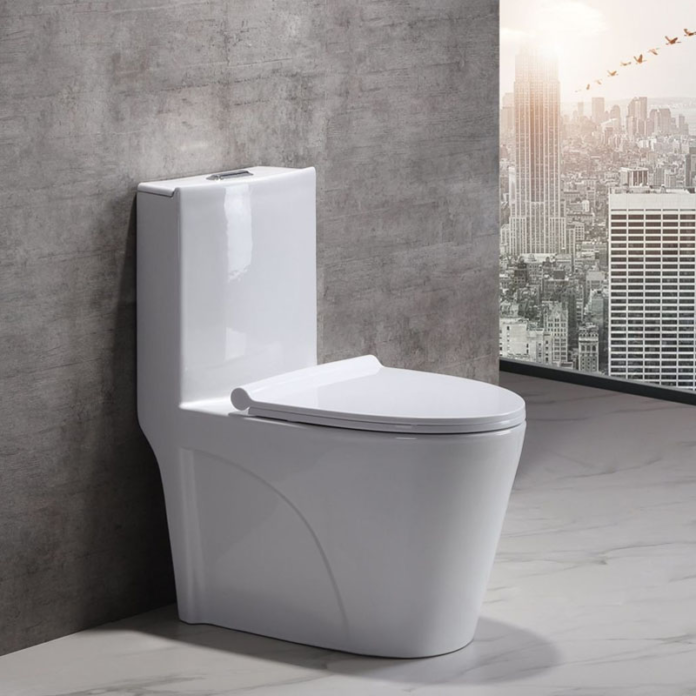In today’s world, accessibility is paramount. The Americans with Disabilities Act (ADA) ensures that individuals with disabilities have equal access to facilities, including bathrooms.
Understanding ADA compliance is essential for homeowners, builders, and business owners alike.
This article explores the key features that qualify a toilet as ADA compliant, including height, design, and accessibility.
The Importance of ADA Compliance
ADA compliance is not just a legal requirement; it promotes inclusivity and dignity for all individuals. Bathrooms are often challenging environments for those with mobility issues.
Ensuring that toilets meet ADA standards can significantly enhance accessibility and usability.
The ADA was enacted in 1990 to prevent discrimination against people with disabilities. Compliance with its guidelines ensures that public spaces are navigable and usable by everyone. Therefore, understanding what makes an ADA compliant toilet is crucial for creating an accessible environment.
Key Features of ADA Compliant Toilets
Several features define ADA compliant toilets. These include height, design, and accessibility options. Let’s delve into each of these elements to better understand their significance.
1. Height Specifications
One of the primary features of an ADA compliant toilet is its height. Toilets must be between 17 and 19 inches from the floor to the top of the seat. This height range makes it easier for individuals with mobility issues to sit down and stand up from the toilet.
Standard toilet heights often range from 15 to 16 inches. This can pose challenges for individuals who may require assistance or have difficulty bending. Therefore, opting for the best ADA compliant toilet can greatly enhance user comfort and safety.
2. Design Considerations
The design of an ADA approved toilet is another critical aspect. These toilets typically feature a larger bowl, providing more space for users. A round bowl may not be as comfortable or accessible as an elongated bowl, which offers a larger seating area.
Additionally, ADA compliant commercial toilets often include a more robust flushing mechanism. This allows users to operate the toilet without excessive effort. Lever handles or touchless flush systems can enhance accessibility and usability for individuals with limited hand strength.
3. Accessibility Features
Accessibility features are vital for ADA compliance. Grab bars are often installed next to the toilet to provide support when sitting down or standing up. These bars must be mounted securely and positioned correctly to ensure they can be easily reached by users.
Moreover, the surrounding area must be spacious enough for a wheelchair to maneuver. The ADA guidelines specify that there should be at least 60 inches of clear space in front of the toilet. This ensures that users can comfortably access the toilet without obstructions.
Toilet Accessories and Their Importance
Accessories also play a crucial role in enhancing the usability of ADA compliant toilets. Toilet paper dispensers should be easily reachable, ideally mounted within 7 to 9 inches of the front of the toilet. They should also be placed at a height that does not require users to stretch or reach excessively.
Moreover, consider adding a bidet or toilet seat with integrated cleaning features. These options can greatly enhance hygiene and comfort for users with disabilities. When evaluating ADA compliant toilets, look for models that offer these valuable features.
The Role of Color and Contrast
Color and contrast are often overlooked aspects of ADA compliance. High-contrast colors can aid individuals with visual impairments. For example, a toilet seat that contrasts with the toilet bowl can help users identify the seat more easily.
Similarly, grab bars should be a different color from the wall or toilet to ensure they are easily visible. Ensuring that all features are easily identifiable can significantly improve accessibility for individuals with various disabilities.
Installation Considerations
When installing an ADA compliant toilet, it’s essential to follow proper guidelines. The toilet must be positioned at a height that meets ADA standards. Moreover, ensure that all accessories, including grab bars and toilet paper dispensers, are installed according to the recommended specifications.
Proper installation is crucial to maintaining ADA compliance. It’s advisable to consult with a professional who has experience in accessible design. This will ensure that all elements are correctly placed and functional.
Regular Maintenance
Regular maintenance is necessary to keep ADA compliant toilets functioning correctly. Check for any issues with flushing mechanisms or accessories to ensure they remain user-friendly. Regularly inspect grab bars for stability and ensure they are securely fastened.
Maintaining a clean environment is also vital. A clean toilet promotes hygiene and encourages use, especially among individuals with disabilities. Consider adopting a routine maintenance schedule to address any issues promptly.
Conclusion
Understanding ADA compliance is essential for creating accessible spaces. Toilets play a vital role in this accessibility, and several key features qualify a toilet as ADA compliant.
These include height specifications, design considerations, and accessibility features.
When choosing an ADA compliant toilet, prioritize height and design for user comfort. Incorporating necessary accessories and ensuring proper installation will further enhance accessibility.
Regular maintenance is crucial to ensuring that these facilities remain functional and user-friendly.
Read ADA bathroom requirements to find models that meet these important standards.
By prioritizing ADA compliance in bathroom design, we can create inclusive spaces that cater to everyone’s needs. This commitment to accessibility not only meets legal requirements but also fosters a more inclusive society.




